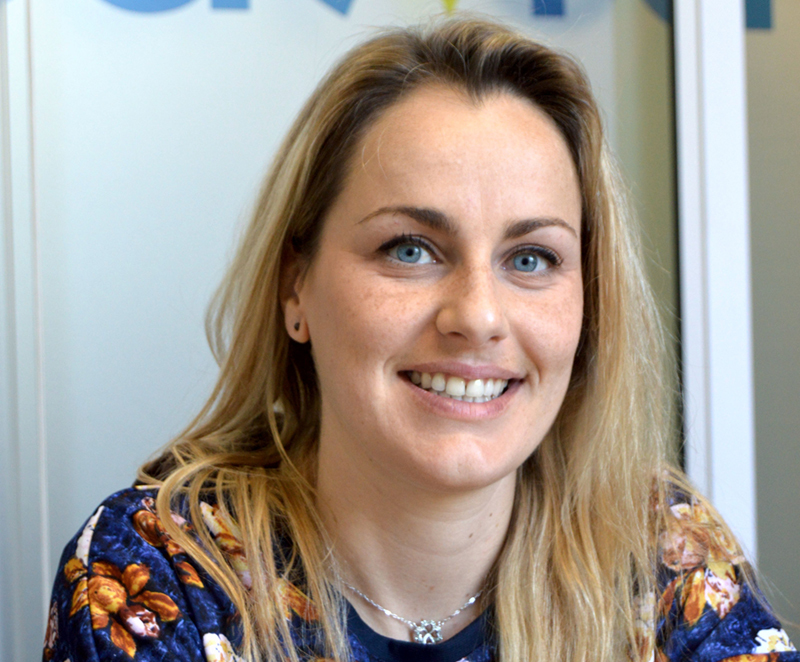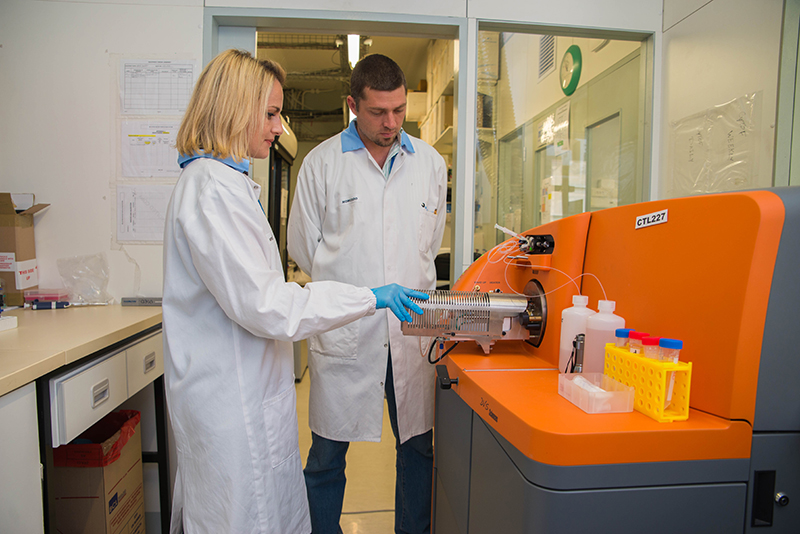UCT’s Dr Virginie Rozot awarded Wellcome Leap grant for TB research
31 August 2021 | Story Kelvin Vollenhoven, Nobhongo Gxolo. Photo Fabio Julies. Read time 6 min.
The University of Cape Town’s (UCT) Dr Virginie Rozot, a research officer at the South African Tuberculosis Vaccine Initiative (SATVI), has been awarded a multi‑year contract as part of Wellcome Leap’s Delta Tissue (∆T) programme.
Dr Rozot will study the human immune system’s response to the tuberculosis (TB) bacterium, Mycobacterium tuberculosis (M. tb), in the human thoracic lymph nodes and how these responses may fail to contain the mycobacteria, leading to the spread of the bacteria to other organs. This information has direct relevance to TB vaccine design and vaccination strategies.
“I think I jumped around my computer for hours after learning of the award outcome.”
“I am still in a state of shock. I think I jumped around my computer for hours after learning of the award outcome,” said Rozot, who is based at the Institute of Infectious Disease and Molecular Medicine.
“As a female early‑career researcher, this is an incredible opportunity to dig into a project for which I have a passion, with a fantastic team at SATVI and a network of South African and international collaborators.”
Rozot is collaborating with Dr Stephen Cose from the Medical Research Council/Uganda Virus Research Institute and London School of Hygiene & Tropical Medicine Uganda Research Unit; Associate Professor Ben Loos from Stellenbosch University; Professor Digby Warner from UCT; Assistant Professor Nima Aghaeepour from Stanford University; and Associate Professor Alex K Shalek from the Ragon Institute of Massachusetts General Hospital, Massachusetts Institute of Technology.
Wellcome Leap also awarded other TB‑related projects and encourages collaboration between different teams.
“We saw in the last 18 months of the COVID‑19 pandemic how funding and collaborative work are necessary ingredients for fighting infectious diseases,” said Rozot.
Shift in understanding
Rozot explained that the human lymph nodes are the primary site of initiation of the adaptive immune response but also provides niches for M. tb growth and persistence, which could be the place where the “war between host and pathogen is won or lost”.
The study, which will employ state‑of‑the‑art immunology, microscopy and microbiology approaches to model the disease trajectory, will involve cells from three anatomic compartments (the hilar, non‑draining thoracic lymph nodes, and blood) in a post‑mortem cohort of persons with TB, who are either infected or uninfected with HIV.
Results will be compared to a control group of healthy persons who died of trauma, but who were successfully controlling M. tb infection and so have the effective immune response to M. tb that may hold critical clues about how to develop better vaccines to control this virulent pathogen. This project will employ cutting‑edge technologies at a single‑cell resolution level to investigate how thousands of immune cells work together to achieve successful immunity.
“This research project marks a shift to better understand the host‑pathogen interaction in tissues, where ultimately the disease occurs,” said Rozot.
Understudied field
Human tissue immunology has been an understudied field of TB research, because in practice human tissue and disease lesions are typically only available for analysis after extremely TB diseased tissue areas are removed surgically where antibiotic TB drug therapy was unsuccessful. This represents an extreme profile of a failing immune response and is, therefore, not reflective of more subtle stages of M. tb infection and disease.
“This project signals a new page in the SATVI research repertoire.”
“This project signals a new page in the SATVI research repertoire because so far we have been working on TB vaccine trials and their immunology, as well as research projects where we have mostly focused on human blood. More recently, this focus has shifted to cells from the lung collected by bronchoalveolar lavage as a proxy for the site of M. tb infection,” said Rozot.
Project aim
According to the World Health Organization, worldwide, TB is the leading cause of death from a single infectious agent, killing 1.4 million people globally and 454 000 people in South Africa during 2019. TB is estimated to have killed between 1.6 and 1.8 million people globally in 2020.
This year marks the 100th year of use of the only approved vaccine, Bacille Calmette Guérin (BCG). BCG is effective at preventing serious forms of disseminated TB in children, but has limited effectiveness against lung TB disease, especially in adolescents and adults.

Rozot, who graduated with a PhD from the University of Lausanne, Switzerland, focusing on the study of M. tb-specific T-cell responses, said that “only more than a dozen TB vaccines are currently in clinical trials, which is in stark contrast with the COVID-19 vaccine pipeline with over 100 vaccines, of which 99 vaccines are in clinical trial development stage, and at least 20 authorised for emergency use.
According to Rozot, “in mice and non‑human primate models, successful TB vaccines appear to prevent the spread of M. tb from the lungs to lymph nodes. In both models, protection against the M. tb bacteria after BCG vaccination was correlated with colonisation by BCG of lung‑draining lymph nodes.
She added: “Understanding the role of lymph nodes in the containment or the dissemination of TB disease in humans is the aim of this project.”
 This work is licensed under a Creative Commons Attribution-NoDerivatives 4.0 International License.
This work is licensed under a Creative Commons Attribution-NoDerivatives 4.0 International License.
Please view the republishing articles page for more information.
Research & innovation





































